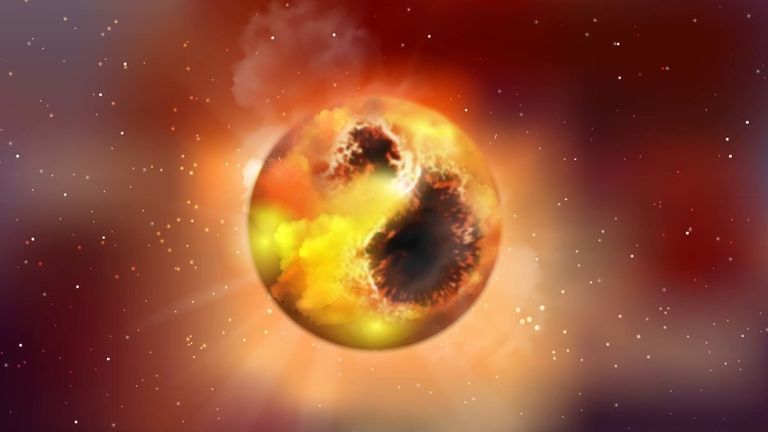The red supergiant star Betelgeuse is smaller and much closer to Earth than previously believed, according to astronomers from the Australian National University, who have given a new data for when it will explode.
While it is normally one of the brightest stars in the sky, Betelgeuse appeared to be dimming in late 2019 – something which scientists thought could mean it was about to imminently explode.
New research suggests that the dimming events were actually due to a dust cloud obscuring the star from Earth and the star’s natural pulsations, but also gives a timeframe for when it will go supernova.
Betelgeuse is one of the largest stars visible to the naked eye, usually the tenth-brightest star in the night sky, occupying the top left position in the constellation Orion.
It is called a red supergiant because the star is nearing the end of its life, swelling out as it burns through the elements in its core before soon – in an astronomical timeframe – exploding in a supernova.
This supernova won’t be able to harm anyone on Earth, but it would be visible, even during the daytime, shining as bright as a half-full moon for roughly a year, according to scientists at the University of California.
But this event is unlikely to happen within our lifetimes, the Australian researchers suggest in their new paper, which is published in the Astrophysical Journal.
Using sophisticated modelling to learn about the physics driving Betelgeuse’s pulsations, the researchers effectively confirmed that sound waves inside of the star were causing it to pulsate.
Dr Meredith Joyce from the Australian National University said that the star was still burning helium in its core at the moment “which means it’s nowhere near exploding”.
“We could be looking at around 100,000 years before an explosion happens,” she added.
Her co-author Dr Laszlo Molnar from the Konkoly Observatory in Budapest explained how the study also revealed the size of Betelgeuse and its distance from Earth.
“The actual physical size of Betelgeuse has been a bit of a mystery – earlier studies suggested it could be bigger than the orbit of Jupiter.
“Our results say Betelgeuse only extends out to two-thirds of that, with a radius 750 times the radius of the sun,” Dr Molnar said.
“Once we had the physical size of the star, we were able to determine the distance from Earth. Our results show it’s a mere 530 light years from us – 25% closer than previous thought.”
Despite being so much closer, the eventual supernova still won’t have a significant impact on Earth.
“It’s still a really big deal when a supernova goes off. And this is our closest candidate. It gives us a rare opportunity to study what happens to stars like this before they explode,” added Dr Joyce.


